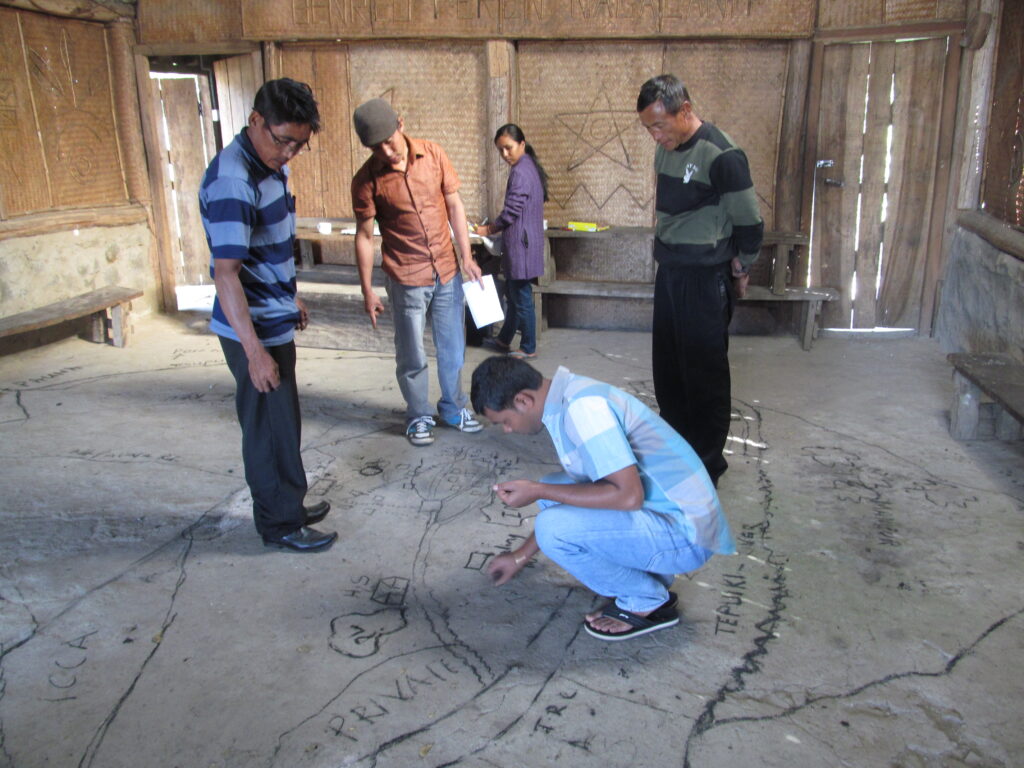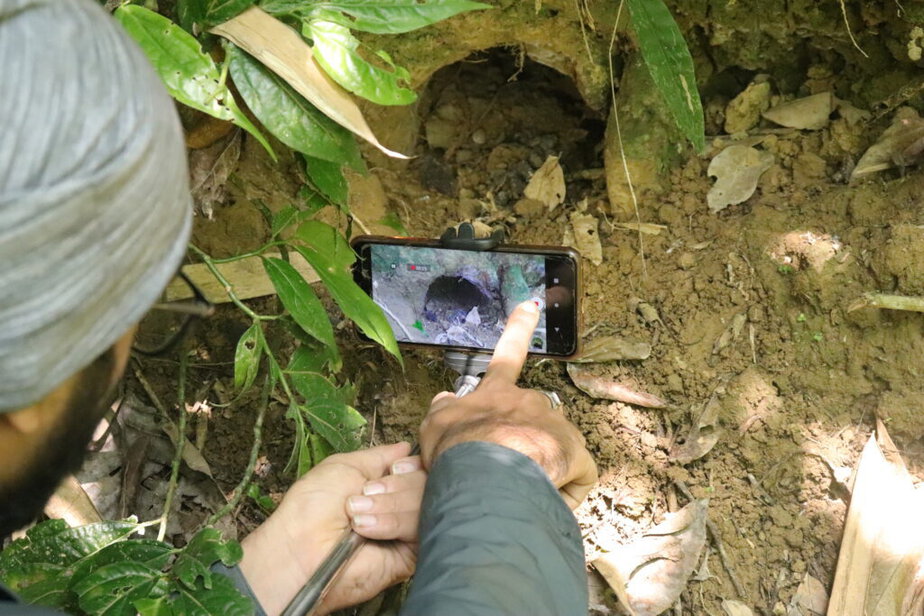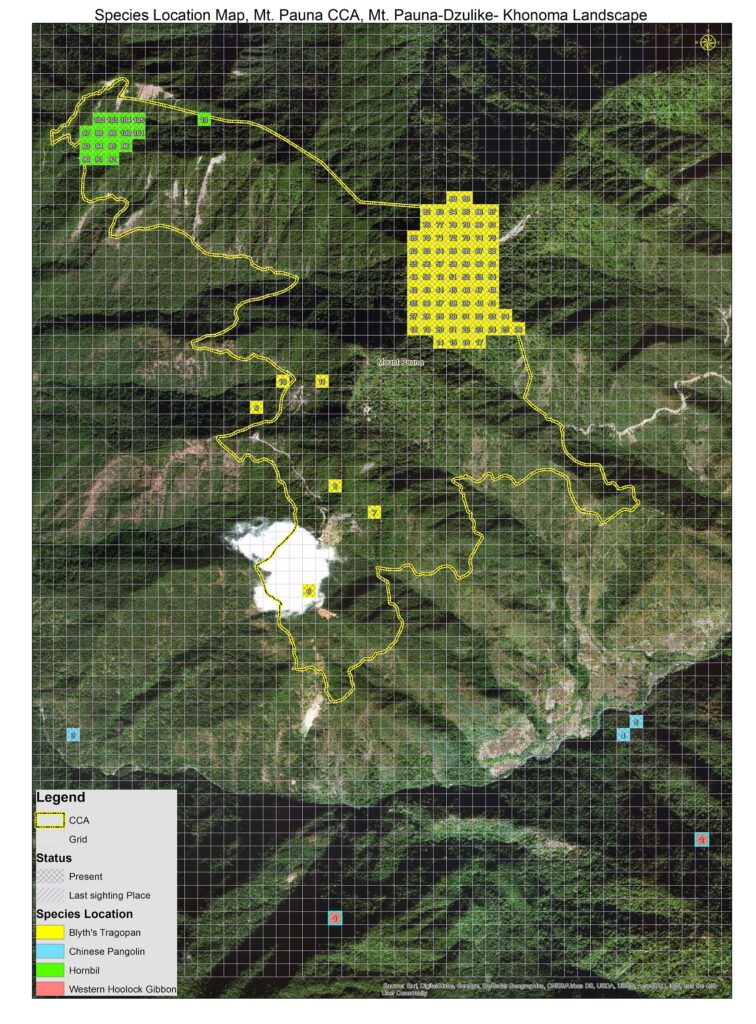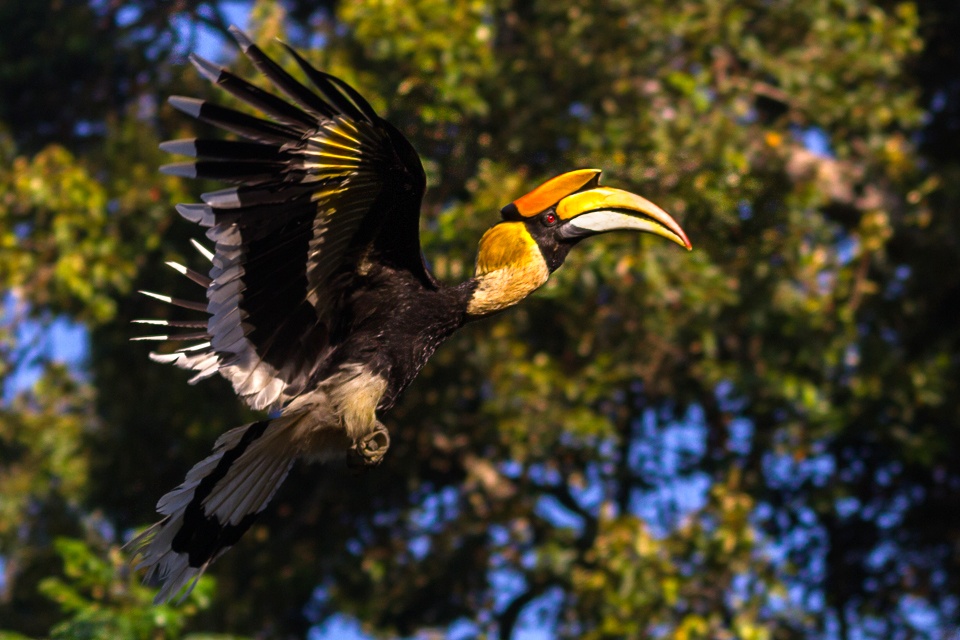Rare species, such as the Chinese Pangolin, should be protected for future generations to witness; otherwise, they will only exist in legends. We are aware that these rare species play a vital role in maintaining the balance of our ecosystem and food chain.
—Kwaheing, Ex-President & Member of Youth Organisation, Benreu Village
Kwaheing is a resident of Benreu village in the Peren District of Nagaland. Benreu is part of the larger Mount Pauna Community Conserved Area (CCA) which spreads across 843 hectares of the district and is famous for its rich biodiversity. Home to some of the world’s most endangered wildlife, the forests include diverse species of flora and fauna that are rare and unique to the region. The rampant degradation here has, however, severely impacted this biodiversity. Over the years, Kwaheing has been witness to rapid forest degradation, excessive logging of timber, changes in cultivation patterns, and infrastructural development on the Mount Pauna landscape, all of which resulted in water scarcity, and also took a toll on the local biodiversity.

Belonging to a community known for its hunting prowess, this traditional activity has always been part of Kwaheing’s cultural identity, primarily for self-consumption. Over time, this has changed, and the practice has reached an unsustainable level across the landscape today. Wildlife hunting has become rampant for more lucrative and illegal reasons, thereby threatening the survival of some of the rarest and most endangered species in the area. Further, forest degradation has led to an alteration in species’ habitats, making their survival and propagation very difficult.
While local communities volunteer to sustain the ecological health of these community reserves, the customary laws that inform their governance and management date back centuries. Although hunting has a cultural significance in Kwaheing’s community, their customary laws ban this activity during wildlife breeding seasons. Further, laws such as the ban on harvesting timber during the monsoons to allow for natural regeneration and the need for permission from the village council to harvest timber during the other months are proof of how these communities have been in sync with nature for a long time now.
Despite the existence of such laws, however, the factors causing the degradation of this landscape were growing stronger by the day. Understanding the ever-growing threats to their forests and biodiversity, communities such as that of Kwaheing’s decided to come together and protect the area, by forming the Mt Pauna CCA. CCAs are clearly demarcated geographical areas, traditionally governed and managed by indigenous community institutions such as village councils, chieftainships, and councils of elders. Established in 2012, the Mount Pauna CCA Management Committee has, over the years, worked closely with various stakeholders such as village councils across the landscape, the Forest Department, student and youth groups, community members who have migrated to other towns and cities for livelihood prospects and the District Administration, to sustain and retain the ecological value of this landscape.
They have, over the years, adopted critical measures that have strengthened the CCA’s governance and management, and positively impacted the ecological health of the landscape. Initially, these measures included a concerted effort to improve the understanding of different stakeholders on natural resource management and the need to protect and manage biodiversity. Gradually, their sustained efforts to sensitise people towards these aspects bore fruit, and they were able to collectively develop a long-term conservation plan for the Mount Pauna landscape, which included boundary mapping of the CCA, biodiversity assessments and subsequent species’ habitat conservation measures. Together, the community established a set of collectively agreed-upon norms such as the ban on logging, the ban on hunting on all private lands that fall within the purview of the CCA, regulations on seasonal hunting, and the penalisation of those who flouted these norms.
As we try to sensitise and bring together communities for the protection and conservation of our forests, there is equal focus on creating a safe habitat for the precious and dwindling wildlife. The floral diversity should be matched by fauna, only then will our forest be complete.
— Heirang Lungalang, Member of Mount Pauna Management Committee & Chairperson, Nagaland Community Conserved Areas Forum
The assessments and activities undertaken by the CCA pointed out the presence of four globally endangered species in and around the Mount Pauna landscape. These included the Chinese Pangolin, the Western Hoolock Gibbon, the Blyth’s Tragopan, and the Great Indian Hornbill. Understanding the criticality of protecting their habitats, the FES team, working closely with the CCA, facilitated district-level discussions with all relevant stakeholders in the landscape, including the Forest Department. These discussions were aimed at bringing the attention of communities and administration alike to the need for scalable and sustainable conservation efforts, as well as to the role that these species played in safeguarding the socio-economic and ecological fabric of the region. Further, though measures were already in place to protect some of these species within the CCA, the discussions intended to understand its status and communicate the urgent need to incorporate more stringent rules to strengthen existing conservation efforts.
By the end of these dialogues, the most important development was the collective agreement among all stakeholders to include the areas beyond the designated CCA under their monitoring purview, for a more nuanced and enhanced protection coverage.

In 2018, the Mount Pauna CCA Management Committee adopted additional protection measures for the endangered species that resided in this landscape. However, hunting restrictions were limited to regions within the CCA jurisdiction, and any such activity carried out outside these areas continued unpenalised. Further, the lack of adequate data on these globally endangered species, especially outside the designated CCA, also posed a concern.
There was a realisation at that time that the availability of such critical data both within and outside the CCA could enable the community to understand the impact of existing protection measures and render evidence-based actions to improve the habitats of these fast-disappearing species.
The Benreu Village Council, part of the Mount Pauna CCA, was one of the first to pledge to protect the four species even beyond their jurisdiction. They did so in consultation with the Mount Pauna CCA Management Committee, which would oversee the resolution, which enforced a complete ban on hunting the four species both within and outside the mapped areas of the CCA. Individuals found flouting the rules were penalised by the Management Committee with hefty fines or other stringent measures, such as social isolation and ex-communication from the village.

How the Community Came Together to Preserve Biodiversity
In all this, the participation of Benreu youth, like Kwaheing, has been critical for the overall conservation efforts of the Mount Pauna CCA. The CCA management committee has ensured their active involvement by entrusting the responsibility of monitoring the conservation measures implemented. With the support of the trained youth, the comprehensive surveys conducted provided a better understanding of the spatial significance of the landscape’s different parts.
Grid-based mapping assessments undertaken by the village council, its youth group, and the CCA Management Committee within the CCA and the larger landscape generated significant visual information about the habitats of the targeted species. The GIS mapping exercise, which was carried out using Google Earth maps, revealed critical details on the current and past distribution of the species. What the surveyors did was interact with local residents to pen down the areas where these species were present and were sighted, developing grids of such locations for future use and reference.
The data gathered indicated and further substantiated earlier observations- that there is a substantial presence of some of these targeted species in areas outside the designated CCA. The CCA Management Committee produced a detailed assessment of the species’ habitats for the entire Mount Pauna landscape by using the collected information and cross-referencing it with other secondary data such as the soil type, vegetative cover, slope of the land, etc. to determine the habitat needs of these species. This enabled the Management Committee to evolve appropriate conservation plans in collaboration with the Benreu Village Council.

Things were not as smooth as they seemed though – there was a considerable amount of resistance from the community to these established norms and practices, owing to the cultural significance of hunting in the region. However, the CCA Management Committee, together with the Benreu Village Council, worked relentlessly to uphold its commitment to protecting these endangered species. Continuous dialogues sensitised different community stakeholders — such as the student and youth groups, the village elders, village councils, and community members who had migrated beyond the CCA but were still influential in their villages — to the impact that the disappearance of these species can have on human existence.
For instance, the Chinese Pangolins primarily survive on termites found closer to human habitations. The rapid decline of these species owing to excessive hunting practices can result in a termite infestation, detrimental to human living conditions. The Great Indian Hornbills, found in undisturbed natural forests, are known as ‘Farmers of the Forests’ for their role in forest plant seeds dispersal and, in turn, forest regeneration. The presence of Nagaland’s state bird, the Blyth’s Tragopan, which has a significant position in local culture and customs, indicates healthy forests as they live in undisturbed and old-growth (primary) forests. Similarly, the existence of the Western Hoolock Gibbons indicates healthy forest ecosystems. By highlighting the interconnectedness of all species and the adverse impact human actions can have on the ecological balance, in due course, Mount Pauna CCA has been able to obtain the community’s unconditional support for their species conservation efforts.
Led by Kwaheing, the efforts of a Benreu youth group in 2020 to rescue a trapped Chinese Pangolin from beyond the designated CCA boundary reflects the changing attitudes of the local communities. When present in an area outside the designated CCA to repair an irrigation canal, the young men were overcome by a sense of responsibility when they came across a Chinese Pangolin caught in a locally made hunter’s trap, which was, in all probability, laid out to capture one of the endangered species Kwaheing, who like the others, had been deeply influenced by the community awareness campaigns, instantly knew how it was critical to safeguard such rare species. Without limiting their efforts to simply cutting the snare wire to set the animal free, Kwaheing and his friends also extended basic medical aid such as cleaning and disinfecting the animal’s wound with basic antiseptics, before releasing it back into the wild.
We rescued the trapped animal out of a sense of responsibility, believing that by doing so, we were setting an example for the rest of the community.
— Kwaheing
In 2021, this same community in Benreu proved their commitment to species conservation yet again. On a rainy September night, the Mount Pauna CCA Management Committee members were alerted by the Chairperson, who had noticed some light from the protected community reserves. Sensing the presence of hunters, the group decided to lay in wait to catch the miscreants. However, after an hour-long wait and multiple warnings issued by the members, they realised the hunters had fled. The collective inspection of the CCA led to the discovery of a young Blyth’s Tragopan that the members decided to shelter in the village school for the night. The following morning, the Chairperson and the other committee members released the bird into the protected forests.
While the role of community institutions such as the CCAs in forest and biodiversity conservation is undisputed, they have also benefitted from the support offered by organisations such as the Nagaland Empowerment of People through Energy Development (NEPED), the Foundation for Ecological Security (FES). Such organisations have supported CCAs such as the Mount Pauna CCA in building awareness about the issue at hand and undertaking assessments to highlight particular areas of intervention, while also enhancing the capacities of the CCA Management Committees and the local communities to undertake diverse conservation efforts. They strengthen the resolution of these CCAs by improving their access to digital tools and technologies that aid the planning and implementation of conservation efforts, and by leveraging available public funds and provisions for the same.
The CCA Management Committees took this spirit of collaboration beyond just their community. As they recognised the impact of collective action on biodiversity and natural resource conservation, three landscape-level forums were created. These fora provide a common platform for all the CCAs of each landscape to discuss and collectively address larger conservation issues at the landscape level. With a larger vision of safeguarding their forests across the landscape as well as the precious flora and fauna that inhabit them, these CCAs are collectively carving their paths to a better tomorrow, while constantly highlighting the need for every CCA to extend their scope beyond mapped jurisdictions.
We will continue to organise workshops and expert discussions with neighbouring villages- enhancing their understanding of species conservation in the same way we had done in our village. With their active involvement, we will be able to deliver a more robust model of wildlife conservation across the landscape.
— Heigumbuing, Chairman, Mount Pauna CCA Management Committee, Benreu Village
Featured image of a Great Indian Hornbill, courtesy of Navaneeth Kishore.






